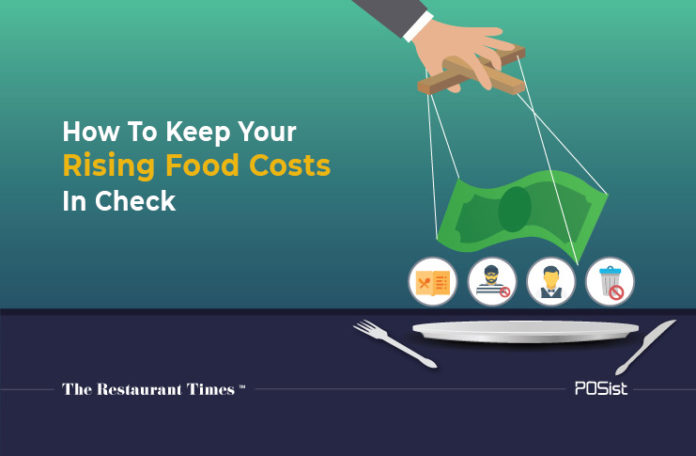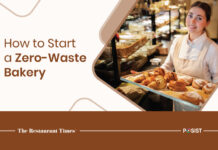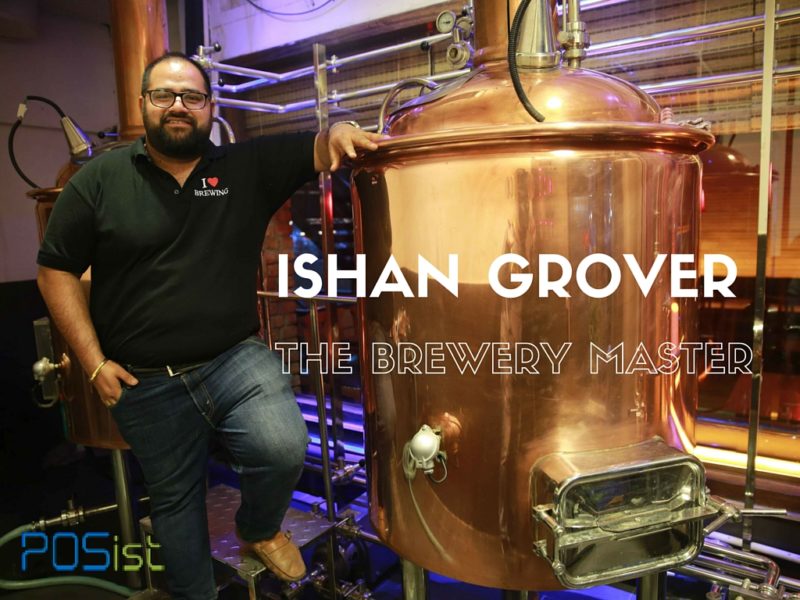Food cost in the USA has been on the rise for a while now. Food prices have risen 2.6% a year on an average for the past two years. Though the rate of food cost inflation has decreased, food prices are still high. Restaurant owners face the worst brunt of this economic trend as an increase in food prices, simultaneously increases the cost of raw materials. As a result, already thin profit margins get more tenuous, and customers are lost even if the costs are only partially transferred to the customers. What most restaurant owners in America forget is that there is a third way to deal with this situation, i.e., Food Cost Control.
In this article, how you as a restaurant owner can manage these rising costs without losing your customers or profits.
How To Practice Food Cost Control To Undo The Effect Of Rising Food Prices
Food cost control may be defined as the process of managing the cost of raw materials and ingredients in a restaurant so that the rising cost of food does not influence the restaurant budget beyond controllable levels. In simpler words, it is the processes undertaken to keep food costs in check. You can practice food cost control and manage the food prices at your restaurant through these methods:-
(i) Sales Forecasting
Sales forecasting refers to studying your average sales data of some months to chart out your average sales, expected footfall and fast-moving dishes under normal circumstances. Sales forecasting is central to food cost control as it will give you a rough idea of how much inventory is moving and what is getting you money. Once you understand this trend, you can tweak your ordering strategy, revise your menu in a way which saves you money and only order items that are actually needed at the correct quantities so that wastage at inventory level is minimal.
(ii) Inventory Management
If you manage your inventory right, you can beat the rising prices no matter what. When you manage your inventory, you reduce wastage, order only what is needed, use your ingredients well in time and order the correct quantity of raw materials. But managing inventory to this level manually can be taxing, and so we suggest that you leverage some technology. Posist’s inventory management module is an all in one feature that you would need to get your raw materials in place. The stock-in and the stock-out feature will tell you your stock at the beginning and the end of each day. Using this feature, you can deduce which ingredients get used the most and order them in bulk to save money. At the same time, you will be able to manage your perishable items better.
The POS integrated tool will notify you as an ingredient nears its expiration date. With this knowledge, you can push the dishes with the said ingredient to recover your investment. The variance report feature will also give you the variance between ideal and actual stock consumed at the outlet. With these reports, you can track and manage wastage, improve your yield from each ingredient and also keep a close check on internal theft.
As you manage your inventory, your wastage will reduce, and you will order only what is needed, thus optimizing your ordering process and reducing your food cost.
(iii) Yield Management
The amount of product you can draw from raw material is called yield. For example, to make chicken steak, only chicken breasts are used. Rest of the chicken is of no use for the dish. Hence the yield of chicken is reduced to chicken breasts. Yield management is the process of maximizing yield from a single ingredient so that more dishes can be made using the said ingredient and the need to order more is reduced.
You can manage your yield by effectively storing and accounting for the ingredients that have been used to produce a single dish so that the same raw material may be used for other dishes as well. At its core, yield management is understanding how much of the raw material is actually going to be used for preparing a menu item.
Practicing yield management at your restaurant will lower the need for raw materials required to produce the same amount of dishes, thus reducing your food cost.
(iv) Portion And Recipe Management
Following standard recipes and portioning your food will also conserve your inventory, reduce the need for extra raw materials and thus bring the food cost down. Recipe standardization is followed all through the US but is mostly seen in QSRs. While other formats also have set recipes for their dishes, the control is not as strict. This creates loopholes, and the ingredients are then susceptible to wastage which will only increase your food costs. Hence we urge you to invest in a recipe management tool which can be integrated with your POS software.
At the same time, practicing portioning at your restaurant is crucial. Not only is it necessary for customer satisfaction and to keep wastage at bay, but it also helps in controlling food costs. The most profitable portion size combinations can be determined using food costs and customer satisfaction. Once you know the portion that you must give for each dish, train your staff to stick to it. Over-filling or under-filling plates will impact your inventory figures and all your price control calculations and strategies. At the same time, it will also lead to either wastage or customer dissatisfaction.
(v) Waste Control
Finally, to keep your food cost in check, you must keep your food waste in check. Food wastage will not only add to your food price and inventory needs, but it will cost you double. This double costing happens as now more raw materials will go into producing a single dish while the wasted ingredients will have to be re-ordered. To manage food waste in your restaurant kitchen, start by tracking where the food is wasted. Divide it into categories and start by controlling one category at a time. The categories in which food waste can be divided are:-
As your wastage will reduce, your reordering needs will reduce as well, since you will be able to use the same batch of ingredients to produce more dishes. For some smart food waste management tips, click here.
We know that the economy is bad and it is a difficult time for restaurant owners in the USA right now. Follow these smart food cost control techniques, and you will surely see a rise in your restaurant profits and a dip in your restaurant food costs.

















